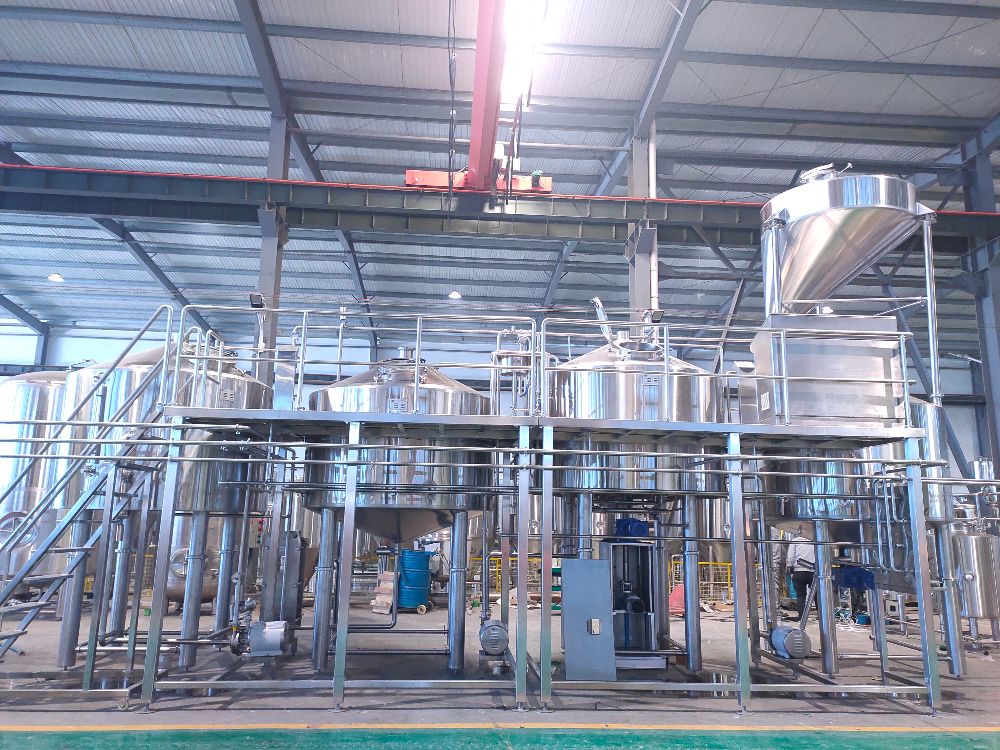Glycol cooling system
- Jun 24, 2017
- 163
- beer
Glycol cooling system
Our standard configuration supply glycol water tank( two times bigger than brewhouse) and 2 chillers. It is OK to support 10-12 double batch fermenter tanks in total. The glycol water will use to cool the fermenter/bright tank and wort.

As to the heat exchanger, there have two types( one phase and two phase is optional). Our standard supply two stage heat exchanger, the cooling process as follows:
First stage:The wort will be cooled to about 40-50 degree by city water in the first stage of heat exchanger.
And the hot liquor tank will recycle the hot water from heat exchanger( first stage).The hot water can be used for sparging and second batch mashing.
It will help save mashing time.
Second stage:The glycol water will cool the wort to fermentation temperature in the second stage of heat exchanger.

Normally some brewmasters expected more bigger expanding capacity, we suggest customer add extra cold liquor tank.
Then the glycol water tank will go to cooling the cold liquor tank and fermenter/bright tank only.
The cold liquor tank will go to cool the wort in the heat exchanger. It will help to release the pressure of glycol water tank.
For example in United States, it is popular to add extra cold liquor tank.
If we add cold liquor tank, there have two cooling stage for optional.
One:The first stage use city water to cool the wort in the heat exchanger, the second stage use cold water to cool the wort.
Two:The first stage use cold water to cool the wort in the heat exchanger, the second stage use glycol water to cool the wort.
We think it can be consider if the cost of city water is expensive in local.
Do you have different ideas?
Edited by Derrick
Sales Manager in Tiantai Company
Email:[email protected]
Our standard configuration supply glycol water tank( two times bigger than brewhouse) and 2 chillers. It is OK to support 10-12 double batch fermenter tanks in total. The glycol water will use to cool the fermenter/bright tank and wort.

As to the heat exchanger, there have two types( one phase and two phase is optional). Our standard supply two stage heat exchanger, the cooling process as follows:
First stage:The wort will be cooled to about 40-50 degree by city water in the first stage of heat exchanger.
And the hot liquor tank will recycle the hot water from heat exchanger( first stage).The hot water can be used for sparging and second batch mashing.
It will help save mashing time.
Second stage:The glycol water will cool the wort to fermentation temperature in the second stage of heat exchanger.

Normally some brewmasters expected more bigger expanding capacity, we suggest customer add extra cold liquor tank.
Then the glycol water tank will go to cooling the cold liquor tank and fermenter/bright tank only.
The cold liquor tank will go to cool the wort in the heat exchanger. It will help to release the pressure of glycol water tank.
For example in United States, it is popular to add extra cold liquor tank.
If we add cold liquor tank, there have two cooling stage for optional.
One:The first stage use city water to cool the wort in the heat exchanger, the second stage use cold water to cool the wort.
Two:The first stage use cold water to cool the wort in the heat exchanger, the second stage use glycol water to cool the wort.
We think it can be consider if the cost of city water is expensive in local.
Do you have different ideas?
Edited by Derrick
Sales Manager in Tiantai Company
Email:[email protected]

.jpg)


